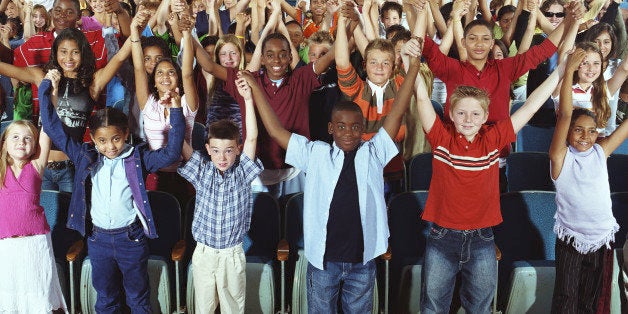
The arts are losing out in the wave of a new philanthropic emphasis on measurable "investment." The very social changes being encouraged by philanthropists today are sometimes being undermined by quantitative criteria sought at the expense of extremely meaningful projects whose impactful results are not always expected or easily measured.
I was deeply moved recently by the story of a small theatre company and its lasting imprint on communities in the South. Bill Rausch, artistic director of Oregon Shakespeare Festival, wrote about this in his introduction to Staging Social Justice, a collection of essays on this key subject edited by Norma Bowles and Daniel Raymond-Nadon. Bill and some colleagues from college founded a theatre company called Cornerstone in the late 1980s that became well known for community-based theatre events in areas such as Kansas and Mississippi. Their biracial Romeo and Juliet in Port Gibson, Mississippi caught national attention. After the show, Cornerstone left the town some of the ticket revenue to fund another biracial play. Rausch had been disappointed for years that they did not use it. However, nearly 25 years later, he learned that the town had been nationally recognized for the diversity of its leadership. When he reconnected with people from the community, they told him all this came from that play, which had improved race relations and enabled the town to genuinely collaborate for the good of all.
Everywhere, non-profit executives are hearing calls for measurable impact from the funding sector. Yet, how does one measure the kind of success that Rausch describes? In today's "venture philanthropy" environment, would this outcome be funded, or even proposed? Is our philanthropic community at risk of taking on the same damaging, short term, results-oriented horizon as our stock markets?
Perhaps, yes. The newer generation of philanthropists is very mission driven and less interested in the operations and challenges of the organizations they support than the actual results being achieved. In many cases, they are founding their own organizations to address causes they care about.
Unfortunately, regional theatres' creative output is not viewed as critical to some of the larger social challenges -- disease, inequality and education reform -- that are drawing more immediate attention. On the corporate side, larger companies have moved away from the arts toward more direct interventions that align closely with their own industries: autos and highway safety campaigns, telecoms against texting while driving, engineering and software firms' investment in STEM education.
Yet, the arts are interconnected with the corporate sector in many communities. Gabriel Byrne tells a story about an impoverished Irish town that renovated an abandoned theatre in the depths of the recession. When it opened its first show and brought hundreds of visitors to the village, the townspeople turned to each other and decided their next project would be to open a bank.
I believe what happened in Mississippi and Ireland is going on throughout the country, and that the broader social impact of these kinds of projects is not being recognized. The arts deserve a place at the community table, not only as service providers, but also as inspirers, enablers and emblems of the very community we are working to build. These results can emerge and blossom over time, yes, but sometimes also very quickly.
For example, the August Wilson Monologue Competition, a nationwide event that combines the elements of theatre and life skills for young people, has grown in a short time to reach 1,200 students per year. The late August Wilson was a landmark playwright who wrote a century cycle of plays about the African-American experience. Ten plays, in total, each taking place in a different decade of the twentieth century. He has left behind a rich and inspiring body of work to perform. The competition not only connects students to a variety of characters, roles and stories but to the historical and social themes and events explored in Wilson's work. It began eight years ago at True Colors in Atlanta, and it now encompasses theaters like Center Theatre Group (CTG) in Los Angeles, Seattle Rep and the Leap program in New York, which each host local competitions, culminating in national finals and winners.
Jennifer McEwen of True Colors, who coordinates the program nationally, says:
The competition has had a huge impact on Title 1 students. Others, who dropped out of school, have gone through the competition and were inspired to get their GED and continue their education. We have interest from 12 more cities to be part of the program, and we hope to add two per year.
Leslie Johnson, Director of Education and Community Partnerships at CTG in Los Angeles, where 12 students have just been named finalists, said:
I'm so happy for our regional finalists as they embark on their exciting journey to the stage of CTG's Mark Taper Forum. Performing in our iconic theatre will be an experience to cherish, but even more importantly these students will gain confidence and a deeper appreciation for August Wilson -- a significant African-American playwright.
Similar programs and experiences are happening at theaters all around the country. They provide students with opportunities to explore their own stories and history as well as that of people who may not look and act like they do. It is much more difficult to dismiss groups of people once you have spent time reading, studying or watching their stories on stage. Yet, how do we measure the impact of these kinds of connections, other than to see how they improve the lives of an entire generation of students, and create a more cohesive, vibrant culture over time?
In my next blog, I will explore the positive mark that these kinds of programs can leave on troubled high school youth, in places like San Francisco and Dallas, to get a better sense of what it means to engage students in theatre, both for the benefit of a community and for a school.